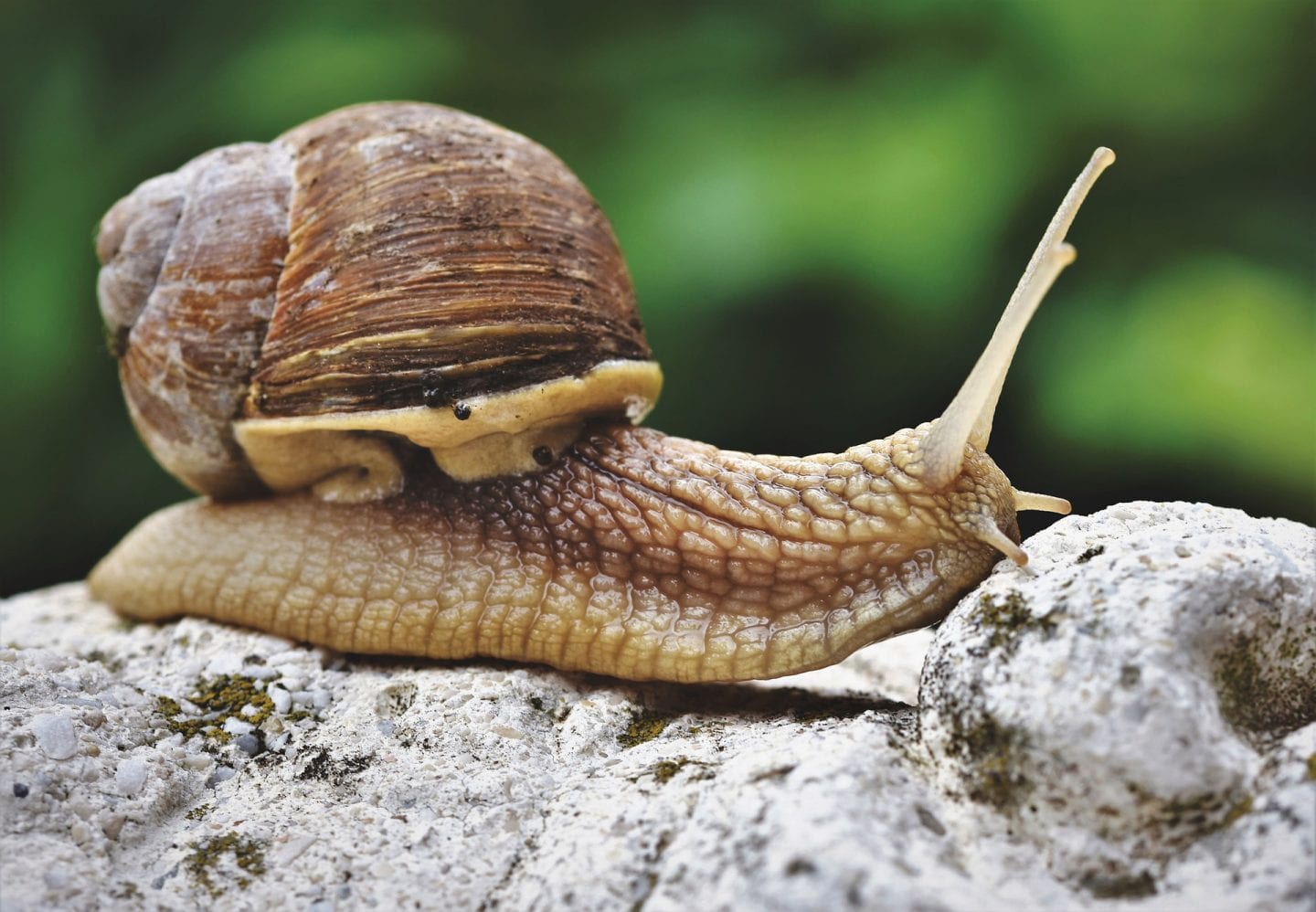The mantle of the Spanish dancer helps it swim through water via undulating motions.
“The Spanish dancer acquired its exotic name from its startling appearance and graceful movement.” (Downer 2002:12)
Water is not only the most abundant liquid on earth, but it’s vital to life–so it’s no surprise that the majority of life has evolved to thrive on and under its surface. Moving efficiently in and on this dense and dynamic substance presents unique challenges and opportunities for living systems. As a result, they have evolved countless solutions to optimize drag, utilize surface tension, fine tune buoyancy, and take advantage of various types of currents and fluid dynamics. For example, sharks can slide through water by reducing drag due to their streamlined shape and specially shaped features on their skin.
Class Gastropoda (“stomach-foot”): Snails and slugs
There are at least 40,000 known species of gastropod, with many more yet to be discovered, making it the largest class of mollusks. These animals exhibit torsion, meaning their internal organs are twisted 180° during development. The majority of gastropods have shells, and most open up on the right side. The largest gastropods are the size of a small child (3 feet, or 1 meter) while the smallest are barely visible to the naked eye.
Become part of a global community helping innovators around the world to put human activity into better harmony with the rest of nature.
Join Today: $10/Month or Just $100/Year
We use cookies to give you the best browsing experience. By clicking the Accept button you agree to the terms of our privacy policy.
